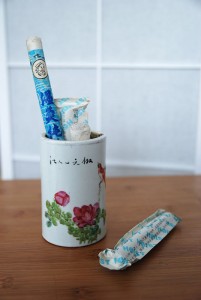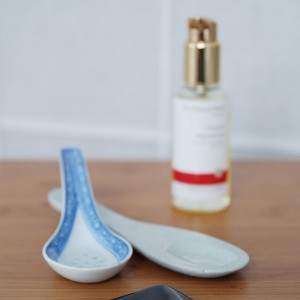Chinese Medicine
 The modern western teachings of conventional medicine and classical naturopathy are meaningfully complemented by the findings of traditional Chinese medicine. Often, the course and healing prospects of many illnesses can be considerably improved by this synergy of various healing systems. Every patient can be offered comprehensive, individual treatment options to improve his or her quality of life significantly.
The modern western teachings of conventional medicine and classical naturopathy are meaningfully complemented by the findings of traditional Chinese medicine. Often, the course and healing prospects of many illnesses can be considerably improved by this synergy of various healing systems. Every patient can be offered comprehensive, individual treatment options to improve his or her quality of life significantly.
The teachings of Chinese medicine have existed for over 2000 years. In the West, acupuncture is the most popular form of treatment, but in China herbal therapy and pharmaceutics prevail. In addition, there is dietetic treatment, Chinese massage and Medical Qi Gong.
The basis for Chinese medicine is the philosophy of Yin and Yang, the theory of the five phases of transformation and the concept of “Qi”. Via channels/vessels, also called meridians, the “Qi” circulates within the whole body and between the organs. The meridian system forms the basis of acupuncture.
According to this system, “health” means the harmony between Yin and Yang, between the individual phases of transformation and a strong, harmoniously circulating “Qi” in the body’s meridian network. The restoration of this harmony is the goal of Chinese medicine and is pursued with the mentioned methods of Chinese medicine. Thus, Chinese medicine differs from the Western medicine not only in the perception of the individual human being. Also, the ideas about causes of illness and symptoms, diagnosis and therapy are based on these basic theories.
In West and East, the focus is on the well-being and healing of the individual human being. Chinese medicine with its treatment options is possibly an effective adjunct to the methods of Western medicine.
Acupuncture and Moxibustion Therapies
 The Chinese word for acupuncture “Zhenjiu” means “needle and moxibustion”.
The Chinese word for acupuncture “Zhenjiu” means “needle and moxibustion”.
In acupuncture, needles are placed at precisely defined points to regulate and harmonise the human Qi energy.
Moxibustion means burning mugwort (Artemisia vulgaris) on acupuncture points without damaging the skin and is especially benefits people suffering conditions of weakness and cold.
An acupuncture session takes up to 60 minutes, the duration is adapted to the respective requirements. The number of sessions depends on the illness and the overall condition of the individual. When using the methods properly, there are no known side effects.
Examples of indications:
- Chronic and acute pain
- Diseases of the respiratory tract
- Gastrointestinal disorders
- Infectious diseases
- Lowered immunity and exhaustion
- Menstrual problems
- Menopausal symptoms
- Allergies
- Various kinds of indispositions such as sleep disorders, restlessness, depressive moods
- Addiction treatment, smoking cessation
- Accompanying support of psychological treatment in coordination with the attending psychotherapist
Medical Qi Gong
The name Medical Qi Gong is used for the therapeutic application of exercises that foster maintaining one’s health and the healing process of diseases.
The origins of Qi Gong stem from the Yang sheng tradition before the turn of the millennium. Yang sheng can be translated as “caring for life” or ” life care” and comprises a complex of physical exercises, mental exercises and instructions for everyday life.
It was not until the 20th century that the term Qi Gong emerged, a summary of physical exercises, various breathing and concentration exercises as well as mental exercises.
The Qi Gong exercises let the Qi flow in the meridians, dissolve blockages and allow the mind to come to rest.
The underlying idea is that every person can actively do something for his or her health by making Qi flow in the meridians. In the classical naturopathic treatments this is referred to as the self-healing powers. Altogether there are thousands of different Qi Gong exercises, which are composed of prescribed movements, breathing exercises, concentration and visualisation instructions. The aim is to find a form of Medical Qi Gong suitable for the individual needs, which is practiced as much as possible, daily at best.
Examples of indications:
- Maintaining health and preventing illness
- Cardiovascular illnesses
- Gastrointestinal diseases
- Thyroid diseases
- Tumours
- Respiratory diseases
- Pain conditions of various causes
- Migraine, headaches
- Allergic ailments, hay fever
- Mood swings
- Insomnia
In my practice, I offer various Qi Gong exercises for different illnesses and problems. Individual Qi Gong exercises can be assembled according to the complaints and the diagnosis.
Nutritional Medicine and Chinese Herbal Therapy
According to the ideas of Chinese medicine, everything we eat strongly effects our “Qi”. Therefore, the right diet is of special importance. Herbal therapy is directly linked to nutrition theory.
The Chinese ideas about nutrition differ from the “healthy nutrition” generally propagated here. While orthodox medicine ascribes importance to calories and the proportions of fat, protein and carbohydrates, the doctrine of Chinese medicine considers the effect of the respective food on the body. The individual constitution and life situation of each person are always taken into account.
With the right nutrition it is possible – and sometimes indispensable – to influence the healing process and the maintaining of long-term health.
Examples of indications:
- Support of curative treatment
- Maintaining health and preventing illness
- Overweight or underweight
- Digestive disorders
- Various indispositions
Gua Sha “scrape and rub”
 Gua Sha is a treatment method of Chinese folk medicine widely used in Asia. It is a special treatment of connective tissue and muscles that releases congestion, relieves pain and accelerates the healing process of many diseases.
Gua Sha is a treatment method of Chinese folk medicine widely used in Asia. It is a special treatment of connective tissue and muscles that releases congestion, relieves pain and accelerates the healing process of many diseases.
Examples of indication:
- Particularly effective for back and joint complaints
- Infectious Diseases
Tuina
The Chinese massage technique Tuina is a special form of massage, based on the concept of the meridians and acupuncture points. There are special indications for children and elderly people.
Traditional Chinese Medicine (German)
The brochures are in pdf format and optimized for printing, please fold accordingly.
